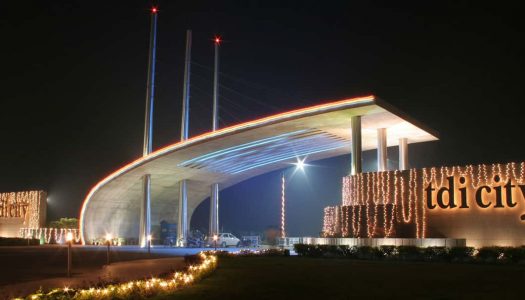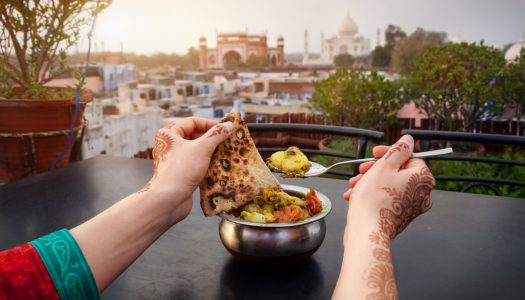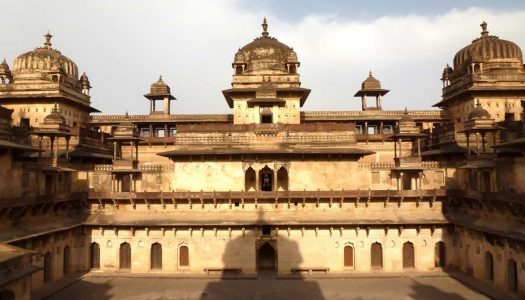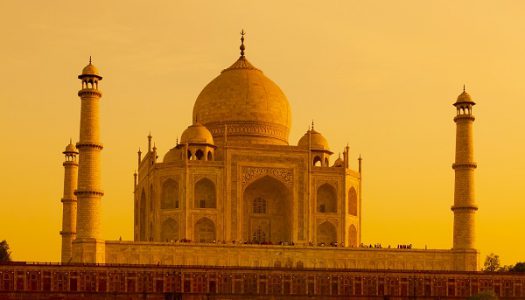Every traveller is aware of the magnificent Taj Mahal residing in the city of Agra. You must have heard the tales of Shah Jahan and Mumtaz. While they receive a lot of popularity from travellers, many narratives remain hidden inside the forts in Agra. These massive monuments of glory and heritage take you back in time like never before!
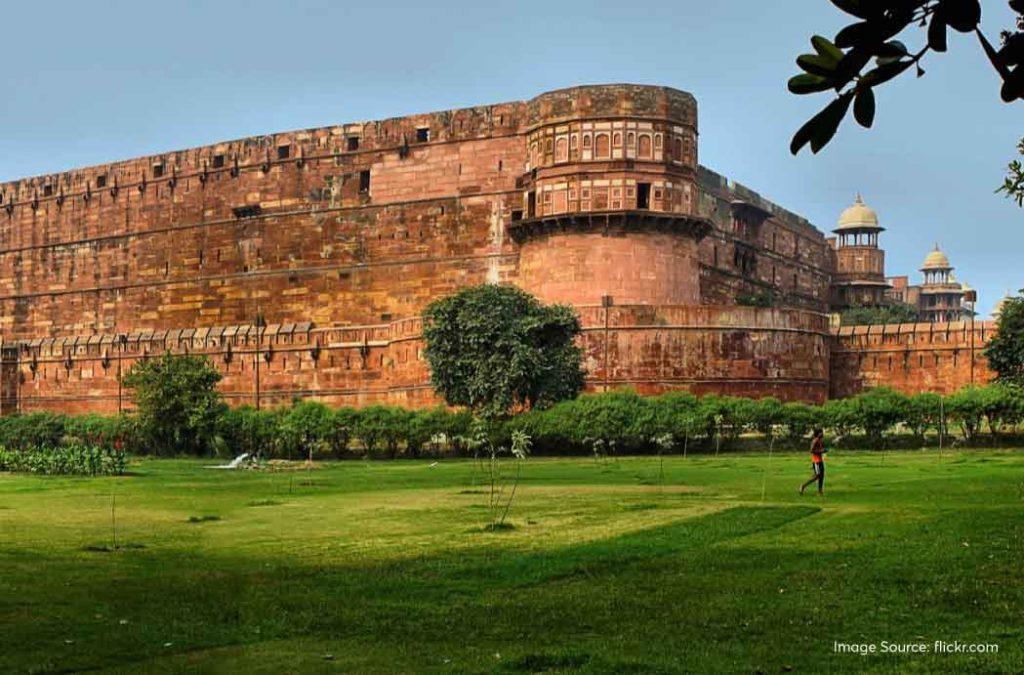
No wonder you get an amazing opportunity to see intricate details everywhere. After all, every corner of these forts in Agra tells a story that remains unheard to the world out there. The artistic brilliance of the craftsmen truly reflects the kind of glorious period it must have been! To experience it all, you can book hotels in Agra for a comfortable getaway. So, let’s get going with exploration.
Book Budget Hotels in Agra
Forts in Agra: Let’s Check out the Glorious Red Fort
You must have been to historical places in Rajasthan or in India but have you ever imagined the grandeur of the Agra Fort? Interestingly, it is a UNESCO World Heritage Site, all thanks to the opulent architecture and luxurious interiors. That’s exactly why it attracts history buffs and travel enthusiasts here. The city of Agra was under Mughal influence. Hence, you can find multiple Islamic architectural details throughout the fort. It was initially used as a military fort and a royal residence.
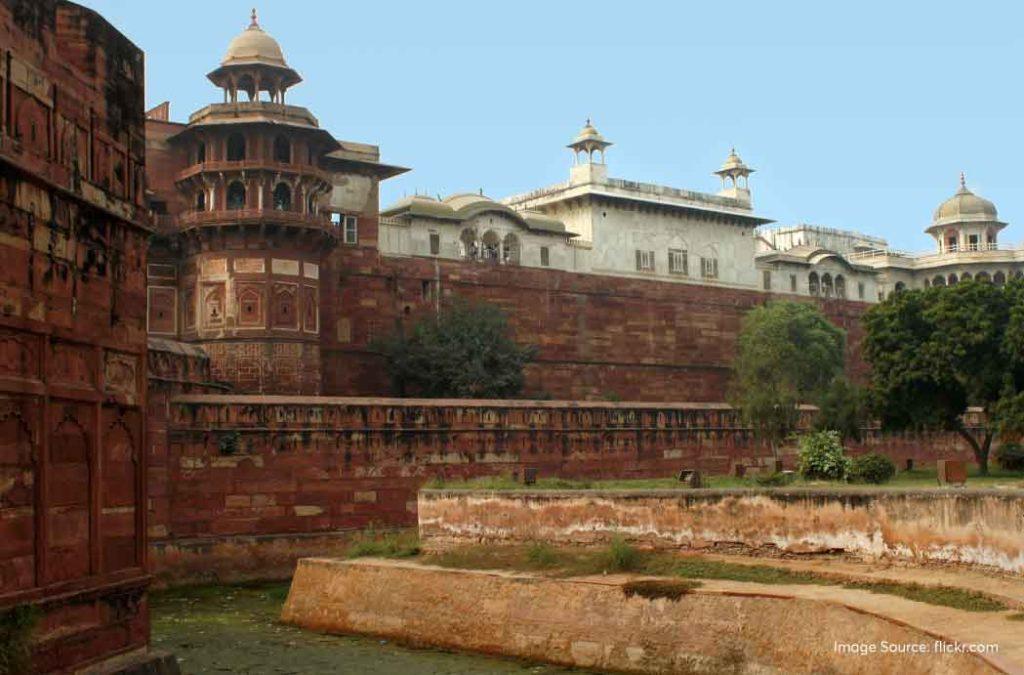
Imagine witnessing a magnificent monument where you would easily need 3 hours for complete exploration. The Red Fort is undeniably a buzzing destination for art enthusiasts. You can notice a fusion of Islamic, Persian, and Hindu architectural styles. What’s more? Something common about Mughal-era monuments is the aspect of symmetry. They are so evenly made, you would doubt your sight. Being one of the important forts in Agra, let’s dive into its elegance.
Discovering the History of the Red Fort of Agra
Indian history is definitely fascinating! Multiple forts, palaces, and monuments across the country were built for protecting different dynasties. Majorly, these constructions were done to protect the reign of emperors in specific cities. That is exactly how the Red Fort was made during the rule of Emperor Akbar. It is strategically positioned near the Yamuna River thereby ensuring ventilation. The location also provides a clear view of the faraway landscapes. Interestingly, the fort was the residence of many emperors till the year 1638.
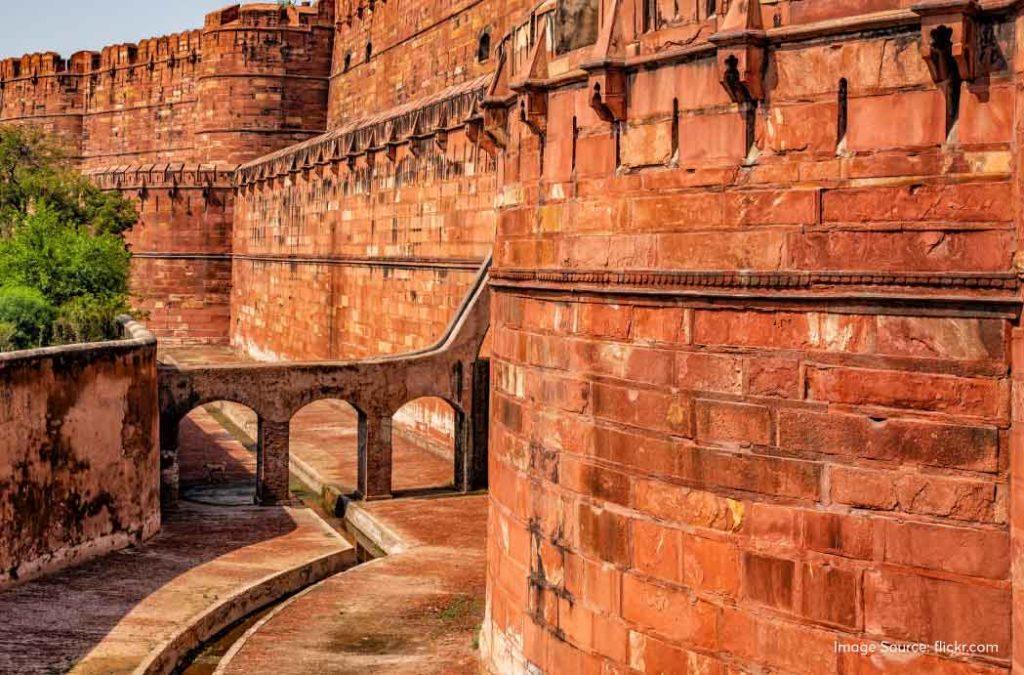
While you know a lot about its construction and architecture, it is also important to understand many emotions that redefine its glory in today’s time. The Red Fort has been a part of many historic events thereby making it a significant part of the city’s heritage. It was used for the imprisonment of Shah Jahan. To your surprise, the emperor spent his final days looking at the massive Taj Mahal built for his love Mumtaz. This does talk about the deepest love between the two, signifying its glory.
Key Features and Structures of the Agra Fort
1. Four Gates
Just like massive forts in Agra, even this one has significantly huge gates. You would be surprised to know that one fort literally has 4 gates for entrance. Interestingly, each has its unique purpose. The Delhi Gate was used for the entry of royal dignitaries and family members. You can see beautiful carvings, geometric patterns and massive round bastions.
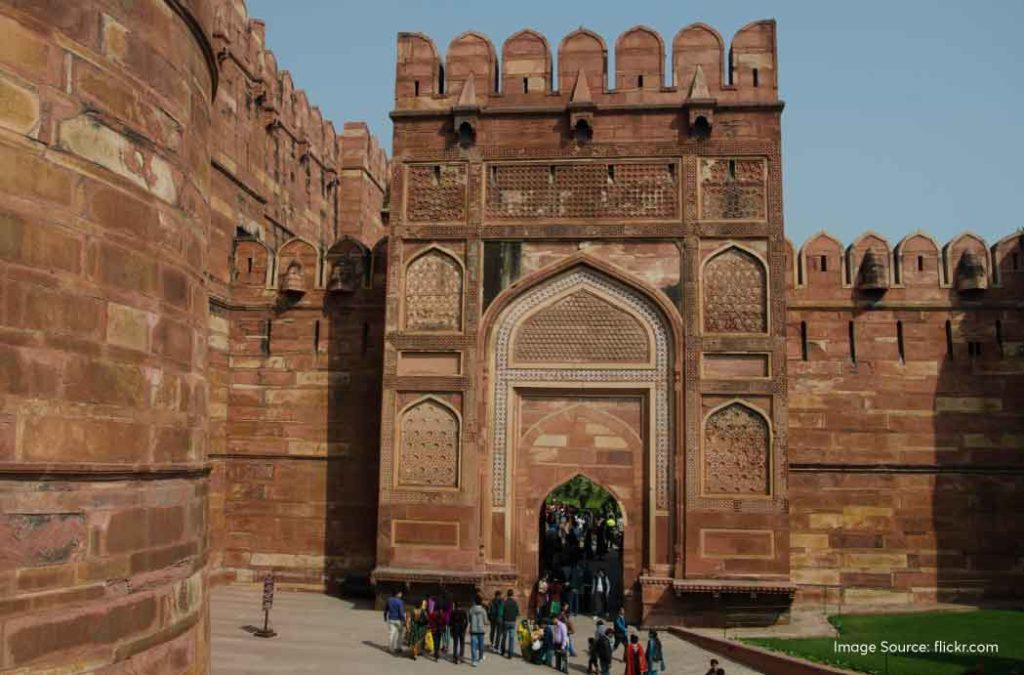
Amar Singh Gate is another prominent gate of the fort. It is best known for its grand archway and intricate carvings. Akbar Gate was a secondary entrance during the past. It was utilised for the movement of troops and supplies. The fourth gate is Hathi Pol (elephant gate). As the name suggests, you can see big structures of elephants. This gate was only for grand ceremonies.
2. Diwan-i-Aam
After living in buzzing cities, imagine the fact that emperors had a special space for the public audiences. The Diwan-i-Aam is an impressive structure within the Red Fort. As the name suggests, this area was designed for the common members of the court. You get an opportunity to witness the architectural excellence of the empire. It was built during the reign of Emperor Akbar, which is well justified by its beauty.
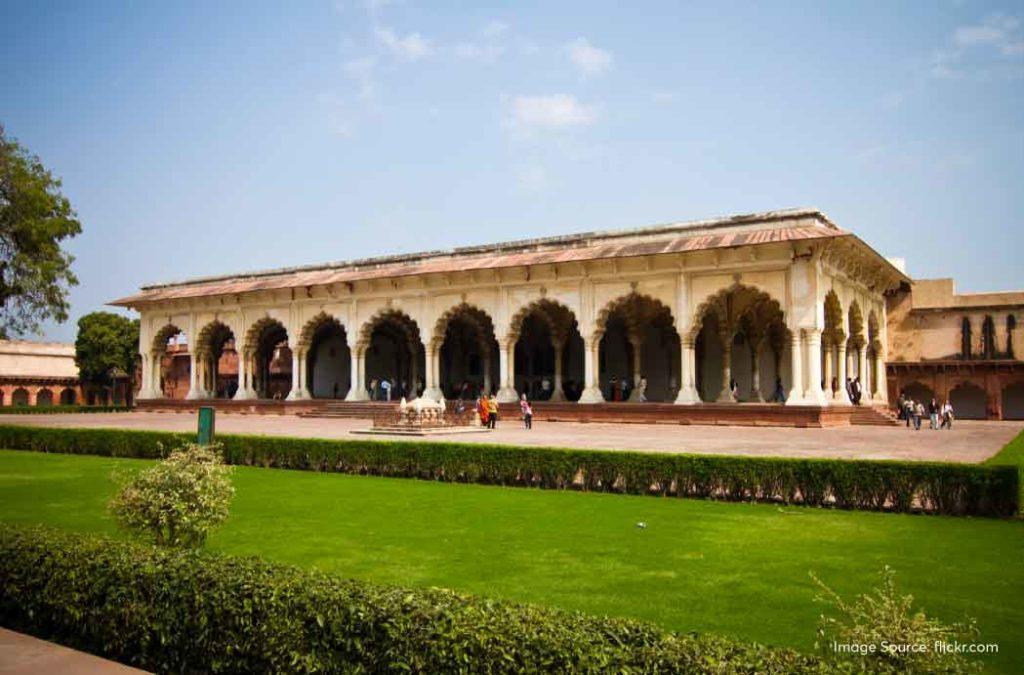
Later, multiple emperors resided in the fort, leading to various modifications in its design. Isn’t it wonderful to stand on the land where many emperors took decisions of their dynasty? Diwan-i-aam witnessed multiple disputes among the public and heard appeals from the locals. Lastly, do notice architectural features like jharokhas, intricate pillars, and arches.
3. Diwan-i-Khas
As the name suggests, Diwan-i-Khas was for the khas (special) members of the court. It meant that only royal dignitaries were allowed to enter this space. Even foreign guests of the emperor received the opportunity to witness the grandeur of this area. This space was restricted to the public considering its awe-inspiring beauty. However, a few selected noblemen were permitted entry.
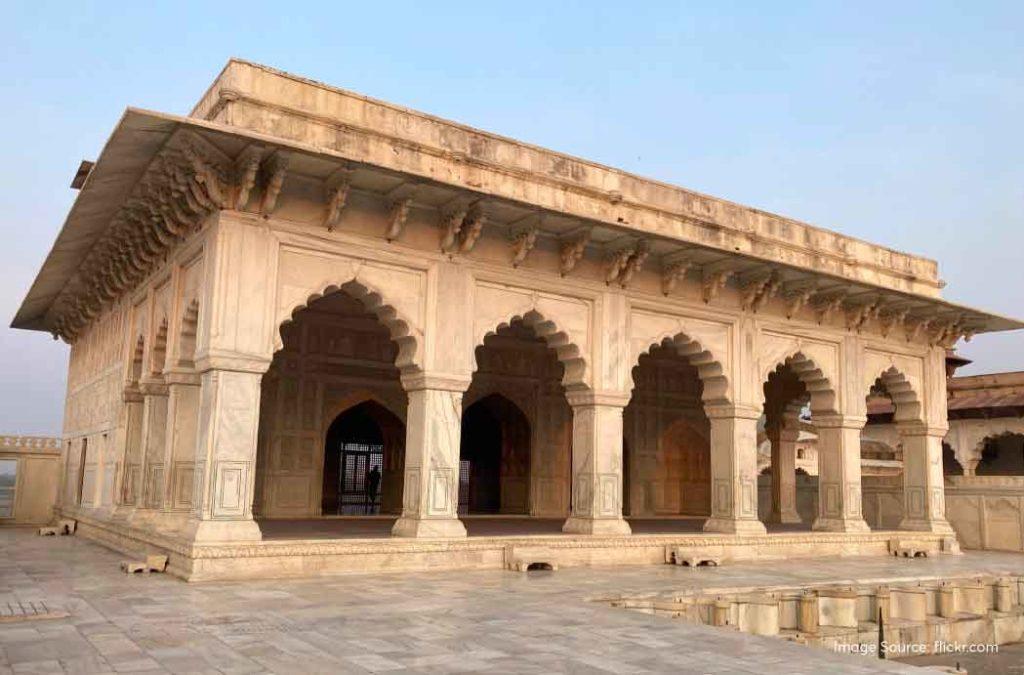
Did you know it was used for confidential discussions? The emperor conducted meetings with his special people. Considering its importance, even the architecture talks of grandeur. It truly entiches the beauty of one of the famous forts in Agra.
4. Sheesh Mahal
Sheesh translates to mirror, which is why you get to walk through a palace of mirrors. While people see it as a palace, it was actually used as a private area for dressing. Countless mirrors help reflect the beauty of the Agra Fort.
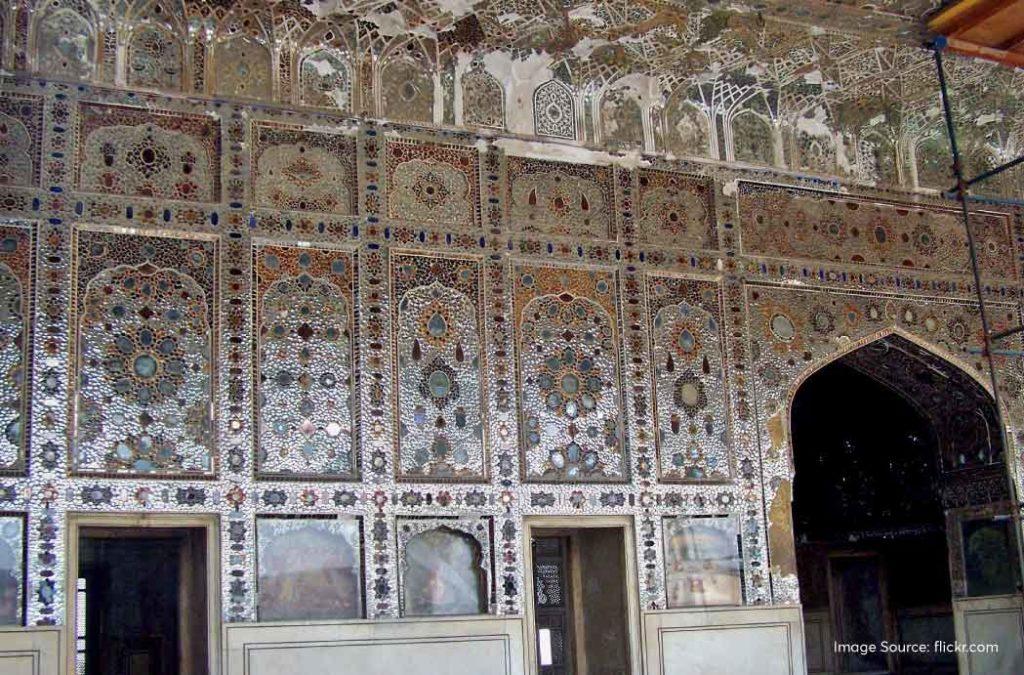
As you enter this place, you can witness a dazzling effect created by thousands of mirrors. The room also allows sunlight to truly enrich the aesthetic appeal of the palace.
5. Anguri Bagh
What makes the Agra Fort famous is the presence of Anguri Bagh within its complex. It was built during the reign of Emperor Shah Jahan. The aesthetic appeal of this place enriches your time here.
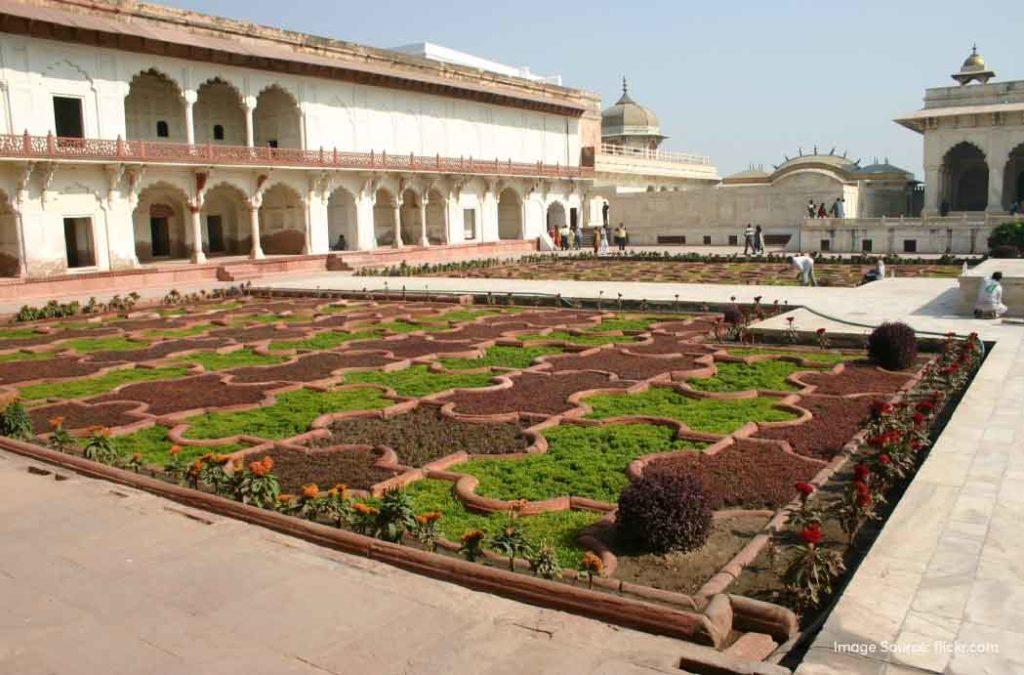
It was a royal place in the fort specifically for the ladies. As the garden is surrounded by fountains, it was used as a relaxing spot for the royal ladies. Additionally, the place was used for growing grapes and other fragrant blooms.
6. Moti Masjid
You must have heard of the famous Jama Masjid; however, think of a masjid decorated with pearls. Moti Masjid is a significant structure within the red fort of Agra. Interestingly, this was the private place of worship for the emperor.
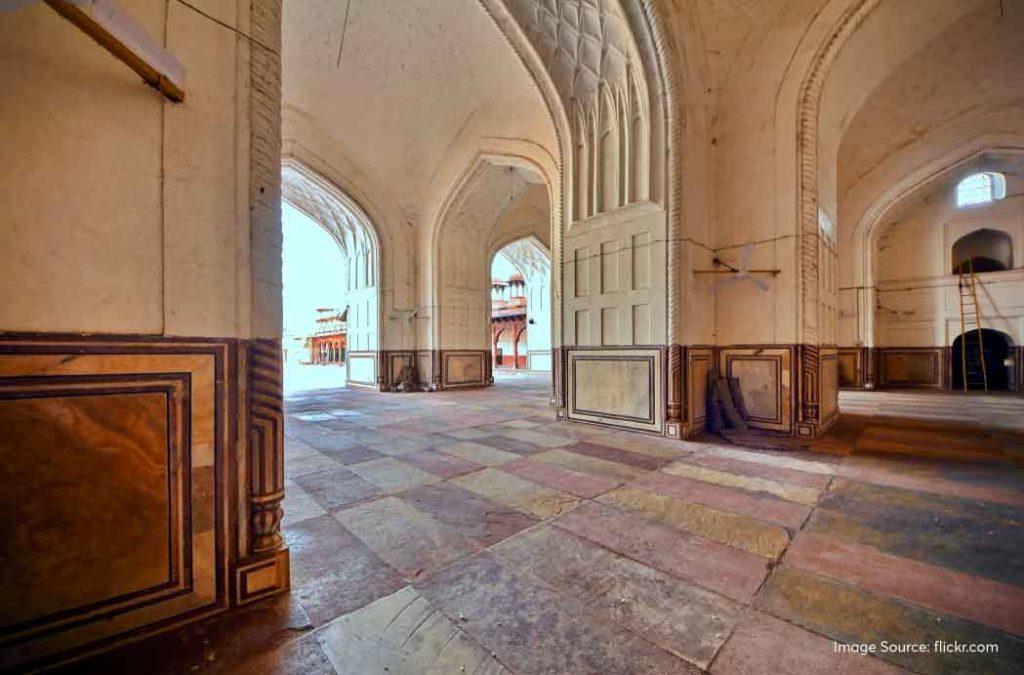
Only a few members of the royal court had access to this one. The place exudes vibes of tranquillity and spirituality in the most elegant way. You can see a blend of minarets, domes and arches redefining the architectural elegance.
7. Khas Mahal
Everything about forts in Agra is royal and beyond your thoughts. Earlier, the grandeur of the empires led emperors to build massively beautiful forts. That’s exactly why Khas Mahal stands as a testament to sheer opulence.
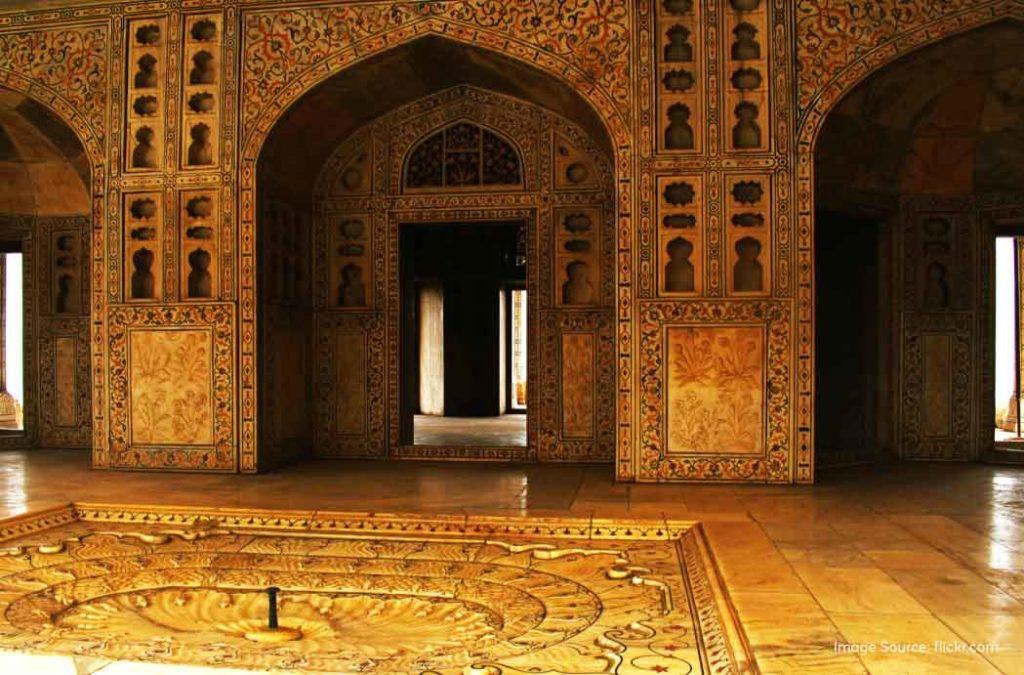
It was the private residence of the emperor, overlooking the Yamuna River. The location was designed in an excellent way to facilitate ventilation and pleasant flowing air.
Exploring One of the Historical Forts in Agra: Sikandra Fort
History always remains a mystery because you come across facts that seem unbelievable. Imagine the emperors who planned their final resting place while they were alive. Such is the case of Sikandra Fort in the city of Agra. Being one of the important forts in Agra, this is the final place of the emperor Akbar. Interestingly, he himself planned to build a fort before his last days. Isn’t it astonishing to come across such monuments that leave an intriguing message?
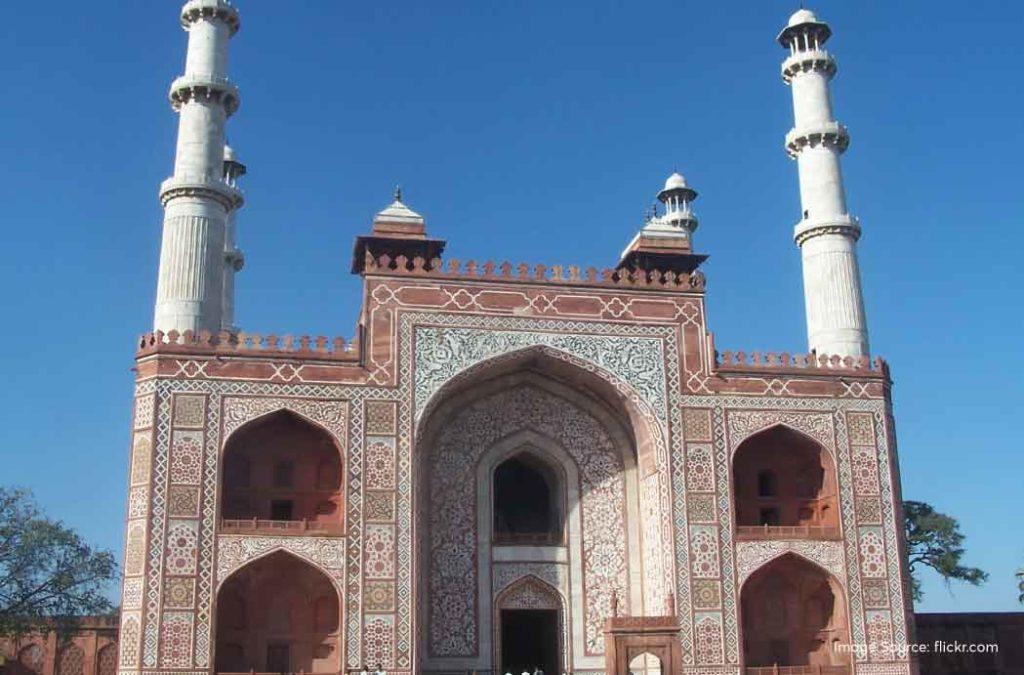
The construction for the Sikandra fort began in 1605; however, it was completed after Akbar’s death. The fort was finally completed in 1613 by the emperor’s son. In today’s time, the fort stands as a testament to Akbar’s commitment towards cultural elegance and love for jaw-dropping architecture. So, let’s understand details about one of the unique forts in Agra.
Key Features of the famous Sikandra Fort
As you enter the fort, you can see the main gateway with intricate work of white marble. What makes it even more beautiful is the colourful mosaic patterns. The presence of four minarets adds elegance to the structure. What’s more? The five-tiered structure houses a false tomb of Akbar. It is because the actual grave lies below in a crypt.
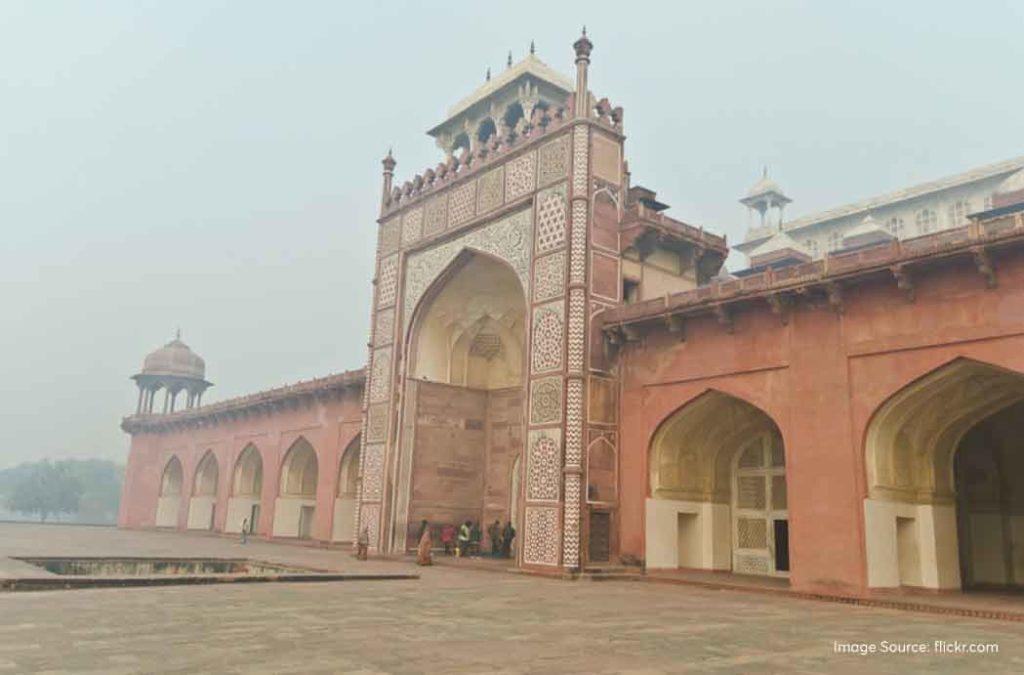
You can see extensive usage of floral patterns throughout the fort. Being a Mugal-era structure, it also features geometric designs. Do not forget to notice the walls adorned with calligraphy. embellish the walls, showcasing the artistic expertise of the Mughal craftsmen.
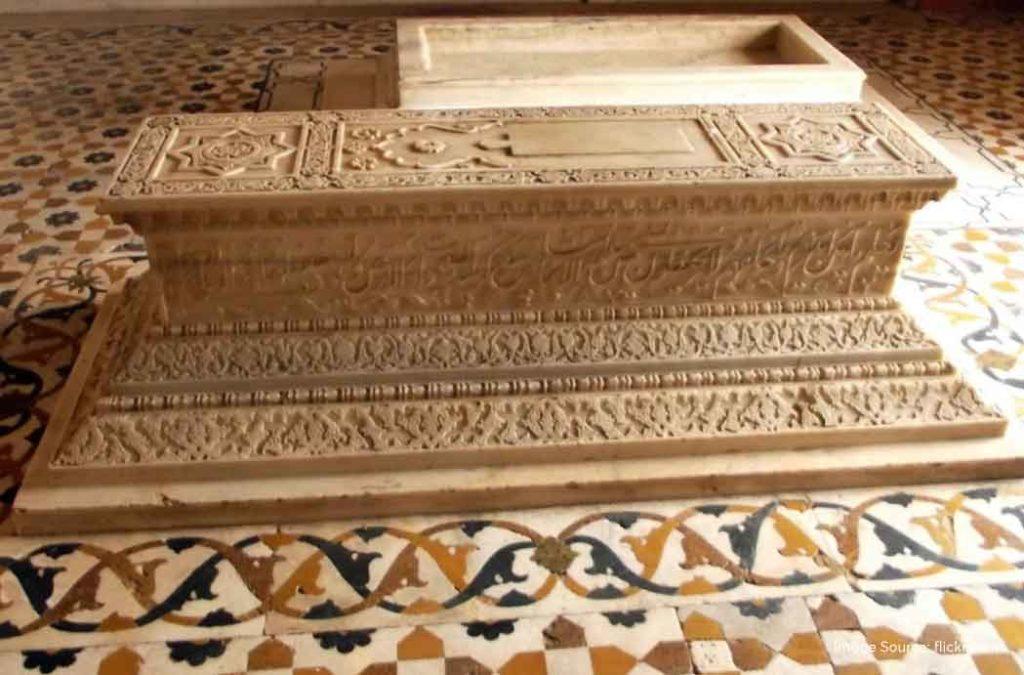
Along with the monument, you cannot forget appreciating the beauty of the Mughal gardens around. They are home to multiple floral beauties elevating the surroundings. It was also emperor Akbar’s wish to build a tomb in a peaceful setting; away from the hustle and bustle.
Forts in Agra: Revealing Important Details for Your Visit
Agra Fort
- Location: Agra Fort, Rakabganj, Agra, Uttar Pradesh 282003
- Timings: 10:00 Am to 5:00 Pm
- Entry Fee: INR 50 Per Person for Indians | INR 350 for Foreign Guests
- Nearby Attractions: Chhatrapati Shivaji Maharaj Memorial, Sri Ram Hanuman Mandir and Paradise Park.
Sikandra Fort
- Location: 6XC2+C53, Tomb of Akbar The Great Area, Sikandra, Agra, Uttar Pradesh 282007
- Timings: 9:00 Am to 7:00 Pm
- Entry Fee: INR 30 Per Person for Indians | INR 310 for Foreign Guests
- Nearby Attractions: Chini ka Rauza, Taj Mahal, Aram Bagh, Itmad-ud-Daula and Dolphin Water Park.
Dos and Don’ts for Visiting Forts in Agra
Dos
- Always carry a valid ID to purchase tickets and security checks.
- Carry a reusable water bottle to stay hydrated during the trip.
- Make sure to follow rules and avoid touching delicate carvings.
- Arrive early to avoid crowds, especially during peak season.
- Make sure to place your valuables safely. Stay alert to avoid any mishaps with pickpockets.
Don’ts
- Do not write or carve on any part of the monuments.
- Never throw any garbage inside or even around the fort.
- Do not indulge in smoking or drinking alcohol during the visit.
- Make sure to check the list of prohibited items and do not carry them.
- Do not make noise as it may disturb others.
- Do not click any pictures inside prime mausoleums, as it is mostly restricted.
- Do not attempt to climb walls or railings.
Frequently Asked Questions
1. What is the best time to visit forts in Agra?
The best time to explore the city of Agra is during the winter months (October to March). The weather is pleasant and you can easily explore the outdoors. It is best to avoid the summer season (April to June) as the weather can be very hot.
2. Are guided tours available at the forts?
Yes, guided tours are available at most forts in Agra. You can choose to hire government-approved guides. Similarly, there are many private guides sharing their extensive knowledge during the tour. It is best to negotiate the pricing with them.
3. Is there a dress code for visiting forts in Agra?
No, you can wear anything you wish to. However, it is advisable to wear comfortable clothing as you might have to walk a lot.
4. Is photography allowed inside the forts of Agra?
Most places allow photography after charging an amount for a professional camera. It is important to note that photography can be restricted in certain areas of the forts even after paying for the same. This is to protect the sacredness of that place.
5. Are food and water allowed inside the forts?
You can definitely carry a water bottle inside most of the forts. However, eating is generally restricted to maintain cleanliness.















